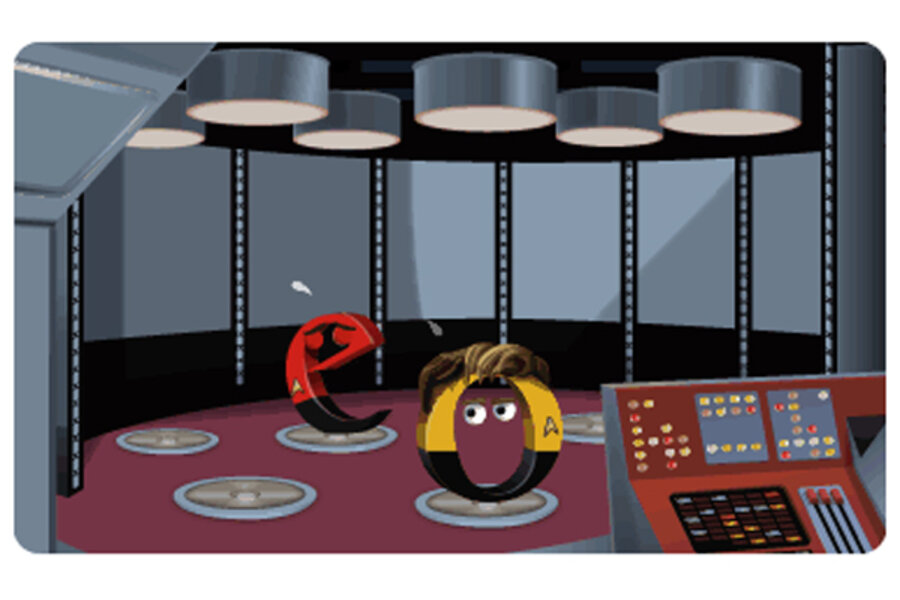Even as an anthropomorphic letter, Captain Kirk boldly goes where no O has gone before.
Kirk has a rare ability, shared only among action heroes. He always escapes danger with just a few scrapes. However, his crew is not so lucky.
Here in the transporter room – where people can warp from one place to another – you can click on the forlorn E to catch him crying? Why the tears?
Well, when Star Trek's writers wanted to show the peril of a situation, they killed off a character. They couldn't just nix an important member of the team, so instead, many episodes show a nameless security officer in a red uniform getting blasted to smithereens, crushed by rocks, or falling to their deaths. The sudden and frequent demise of these "redshirts" quickly became a joke among Star Trek fans, including the Google doodle crew.







